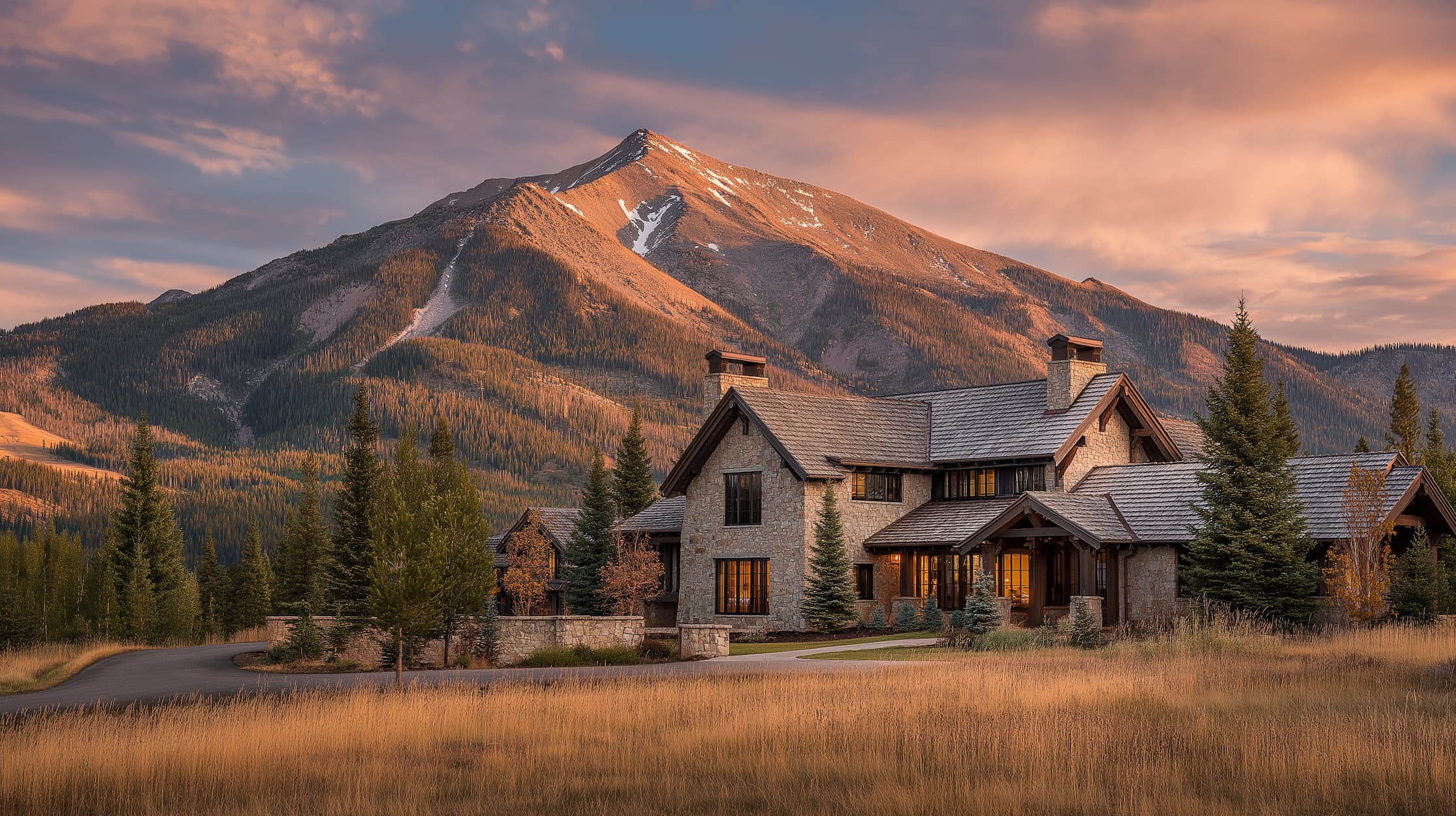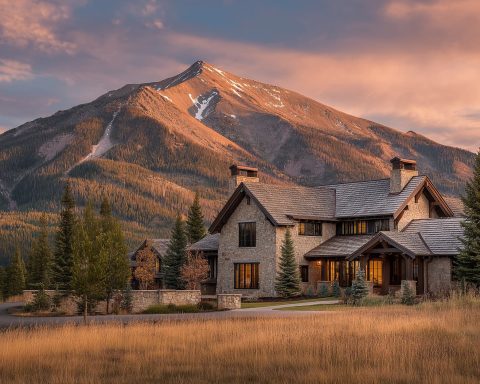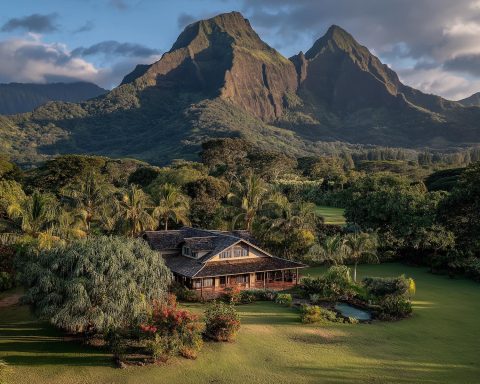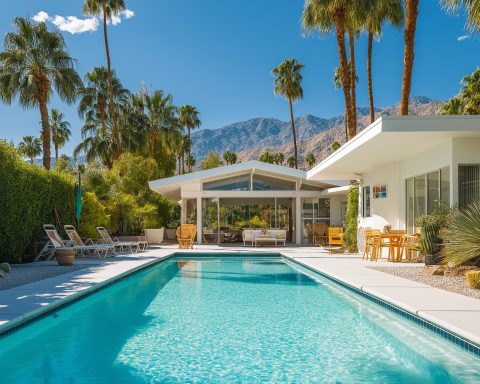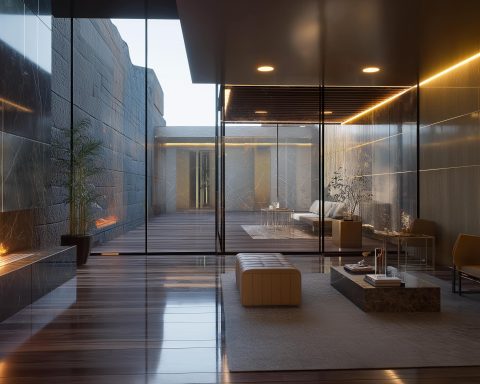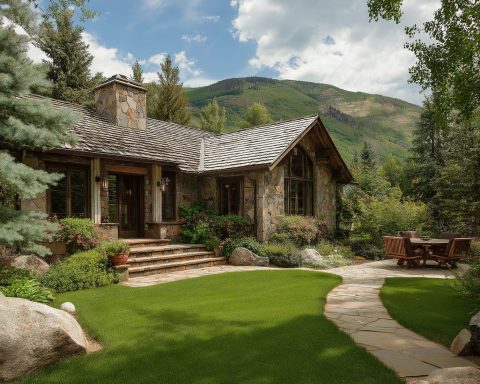Key Facts:
- Home Prices Cooling from Pandemic Peaks: The median sale price for a home in Big Sky is around $2.0 million as of mid-2025, down roughly 25–30% from the record highs of 2022–2023 redfin.com taunyafagan.com. Despite this pullback, prices remain more than double their pre-2020 levels, reflecting Big Sky’s long-term upward trajectory in property values.
- Inventory Surge Favors Buyers: Active inventory has swelled – about 140+ homes were listed for sale in Big Sky by August 2025 zillow.com zillow.com. With only ~13–14 sales per month redfin.com bozemanrealestate.group, the months’ supply now exceeds 10 months, tipping the market into buyer’s territory after years of frenzied seller’s markets. Most recent sales are closing below asking price, with sellers receiving ~93% of list price on average bozemanrealestate.group bozemanrealestate.group.
- Luxury Development Remains Strong: Big Sky continues to attract affluent buyers and developers. High-end communities like Yellowstone Club and Moonlight Basin offer estate homes often $5–$10M+, and a new ultra-luxury One&Only Moonlight Basin resort (the brand’s first U.S. location) is opening in late 2025 charterrealty.com charterrealty.com. Luxury condos (e.g. in Spanish Peaks or Mountain Village) routinely top $1.5–$2M bozemanrealestate.group, underscoring Big Sky’s elite market status.
- Commercial & Hospitality Expansion: Big Sky’s commercial real estate is growing to serve its booming resort economy. The Town Center area has added retail and dining venues, and new hotels are coming online – two hotels opening in 2025 with a third breaking ground commerce.mt.gov – addressing a historic shortage of traditional lodging. Major ski resort upgrades (a new 75-passenger summit tram and gondola in 2025) are boosting year-round visitor traffic commerce.mt.gov commerce.mt.gov, which in turn drives demand for retail, restaurants, and services in Big Sky.
- Short-Term Rental Demand & Yields: The vacation rental market remained steady in 2025. In Q2 2025, Big Sky’s average daily rent (ADR) for short-term rentals rose ~5% year-over-year even as occupancy dipped slightly naturalretreats.com naturalretreats.com. Higher-end homes saw solid bookings, indicating visitors are willing to pay premium rates. Revenue per available rental (RevPAR) was essentially flat (down <1%), suggesting stable income for rental owners despite more properties entering the rental pool naturalretreats.com naturalretreats.com. Short-term rentals continue to be a popular investment strategy for second-home owners capitalizing on Big Sky’s ski and summer tourist seasons.
- Affordability & Workforce Housing Crunch: 80% of Big Sky’s local workforce cannot afford market-rate housing snowbrains.com bigskyhousingtrust.org, and the area has effectively 0% long-term rental vacancy since 2020 bigskyhousingtrust.org. In a landmark move, residents approved a $60 million bond in 2025 to fund 389 affordable homes (deed-restricted for local workers) by 2028 snowbrains.com snowbrains.com. This “Cold Smoke” housing initiative – the largest in Big Sky’s history – aims to alleviate severe housing shortages for year-round residents. Zoning and infrastructure are being leveraged (and expanded) to support this and other workforce housing projects.
- Economic & Demographic Drivers: Big Sky is a small community of roughly 3,500–4,000 residents (median household income ~$125K) charterrealty.com, but it boasts an outsized economic footprint – an estimated $2.2 B annual economic impact, about 4% of Montana’s GDP charterrealty.com. The region’s allure for high-net-worth buyers (Fortune 500 executives, celebrities, and professional athletes) charterrealty.com, combined with remote-work trends, continues to fuel housing demand. Robust tourism (proximity to Yellowstone Park and world-class skiing) and improved access via 22+ nonstop flights into Bozeman Airport commerce.mt.gov commerce.mt.gov underpin the real estate market’s long-term prospects.
Residential Real Estate in Big Sky
Luxury Homes: Big Sky has solidified its reputation as a luxury alpine enclave. Prestige developments – from ski-in/ski-out estates in Yellowstone Club to custom homes in Spanish Peaks and Moonlight Basin – command multi-million dollar price tags. In 2025, median prices for single-family homes have fluctuated due to low sales volume, but remain extremely high. (For example, a few ultra-pricey sales in 2025 drove the median single-family sale above $7 million for one monthly snapshot bozemanrealestate.group bozemanrealestate.group.) Typically, however, $3–$5 million is a common price range for high-end homes, and properties in coveted enclaves can exceed $10–$20 million. Demand for top-tier homes is driven by wealthy out-of-state buyers seeking exclusive amenities – many properties feature panoramic mountain views, ski lifts or golf course access, and luxury design. While overall home prices have cooled from the 2021–22 frenzy, the ultra-luxury segment remains resilient, buoyed by cash buyers less sensitive to interest rates. Big Sky’s “luxury at altitude” appeal is further validated by the new One&Only six-star resort and residences, which signals confidence in the area’s high-end market charterrealty.com.
Condos & Mid-Range Homes: Condominiums and townhomes form the backbone of Big Sky’s “mid-range” housing, although prices here are hardly modest. The median condo sale price in Big Sky hovered around $1.8–$2.0 million in 2024–25 taunyafagan.com taunyafagan.com, more than double its 2019 level. Condo values saw a slight dip (~11% lower in 2024 vs 2023) taunyafagan.com as the pandemic buying surge subsided. Still, demand remains solid for condos due to their rental potential and easier maintenance. Many new condos – from mountain village units to Town Center lofts – are designed for affluent second-home owners and command prices in the high six or seven figures. Meanwhile, single-family homes in Big Sky’s “mid-range” (often older homes or those farther from ski lifts) commonly list in the $1–$2 million range. Townhome inventory is very limited (in late 2024 there were essentially zero townhouses listed taunyafagan.com), reflecting how scarce any moderately priced attached housing is. Overall, Big Sky’s entry-level pricing is high – even a modest two-bedroom condo can approach $1 million. This mid-tier segment did get some relief from the recent market cooldown (buyers have more negotiating power now than in 2021), but affordability remains a challenge except for high-income earners.
New Residential Developments: New construction is ongoing, albeit at a careful pace. Developers are balancing Big Sky’s huge demand with its environmental limits and infrastructure capacity (“explosive growth, limited supply” is the mantra charterrealty.com). Purpose-built resort communities are expanding: Yellowstone Club and Spanish Peaks Mountain Club continue to release new lots and homes (often selling out quickly to members), and Moonlight Basin is adding luxury cabins and the One&Only resort residences. In the Town Center area – Big Sky’s walkable downtown – several mixed-use buildings with condos have risen in recent years, adding housing inventory alongside shops and restaurants. Notably, Big Sky is also investing in affordable housing developments for locals: projects like RiverView Apartments (opened 2024) and Powder Light provide a handful of below-market rentals bigskyhousingtrust.org bigskyhousingtrust.org. The upcoming Cold Smoke neighborhood will be a 99-acre site for nearly 400 workforce homes snowbrains.com snowbrains.com, a critical effort to house teachers, service workers, and others who keep the resort community running. Land sales are another facet – vacant land is scarce in prime areas, but when available, even a 1-acre lot can fetch high six figures (for instance, quarter-acre parcels list around $500K+ bozemanrealestate.group bozemanrealestate.group). Overall, new development in Big Sky is focused on upscale projects and strategic workforce housing, as the community grapples with accommodating growth without losing its character or pricing out its own.
Commercial Real Estate (Retail, Office & Mixed-Use)
Retail & Dining: Big Sky’s commercial real estate is closely tied to its resort economy. The centerpiece is Big Sky Town Center, a planned commercial district that has flourished over the past decade lonemountainland.com lonemountainland.com. Here, new retail spaces, galleries, outfitters, and restaurants continue to open to serve both tourists and the growing resident base. In 2025, retail vacancy remains low – any new storefront coming online tends to be filled by businesses catering to the high-end market (think boutique outdoor gear shops, art galleries, and upscale dining). Annual retail sales in Big Sky exceed $46.7 million (including food & beverage) charterrealty.com, indicating the strong spending power in this small town. A demographic study highlights Big Sky’s consumer base as affluent (57% of residents have a bachelor’s or higher) and eager to spend on dining out, apparel, and recreation charterrealty.com charterrealty.com. As the population and visitation grow, mixed-use developments with ground-floor retail and condos above are in demand. The Town Center, for example, has new projects totaling ~124,000 sq ft of retail/office/hotel/residential space in the pipeline propertyshark.com. Seasonality influences retail: winter ski season and summer bring peak foot traffic (and revenues), whereas spring and fall “shoulder seasons” can be quiet, challenging businesses to survive year-round. Overall, Big Sky’s retail and restaurant real estate has a positive outlook – bolstered by tourism and by locals who increasingly spend their dollars within the community rather than driving to Bozeman.
Office & Hospitality: Traditional office space in Big Sky is minimal, as the town lacks large corporate employers outside of real estate, hospitality, and local services. Most commercial office spaces are small suites occupied by property management firms, vacation rental agencies, architects, or medical and professional services. One trend has been the rise of remote work among second-home owners; however, rather than fueling large office buildings, this has led to coworking spaces and business centers in mixed-use developments. The real star of Big Sky’s commercial sector is hospitality real estate. A wave of hotel development is underway to complement the private home and condo rental market. By 2025, two new hotels are opening – one being an ultra-luxury resort (One&Only Moonlight Basin) and another likely a branded hotel in Town Center – and a third hotel is breaking ground commerce.mt.gov. This is significant because historically Big Sky had very few hotels (travelers rented homes/condos instead). New hotels bring not only guest rooms but also conference space, restaurants, and spa facilities, diversifying Big Sky’s commercial offerings. Mixed-use complexes are also appearing: for example, the new Wilson Hotel (opened just prior to the pandemic) blends a Marriott Residence Inn with street-level retail. Commercial landlords have seen demand for space increase as the year-round population grows. Rents for retail/office are on par with other resort towns – high, but justified by sales. In summary, Big Sky’s commercial real estate is expanding alongside its residential growth, with a focus on hospitality and experiential retail. The community is ensuring commercial development keeps pace so that residents and visitors have services close at hand (a shift from a decade ago, when Big Sky had to import most goods from Bozeman).
Market Trends in 2025: Pricing, Inventory & Seasonality
Pricing Trends: After a meteoric rise in 2020–2022, Big Sky’s home prices entered a correction phase in 2023–2024. That adjustment continued into 2025. Median sale price for all home types was about $1.97M in August 2025, down 31.9% year-over-year redfin.com. This steep drop reflects comparison to mid-2024, when the market was coming off peak pricing (e.g., the median was nearly $2.9M in Aug 2024 by Redfin’s data). Similarly, the median price for a single-family house fell from over $4.2M in Q3 2023 to roughly $3.1M by Q3 2024 taunyafagan.com. However, it’s important to note the small sample size in Big Sky causes median values to swing – a few high-dollar sales (or lack thereof) can skew the stats bozemanrealestate.group. By late 2024, there were signs of leveling: the overall median for all residential properties actually ticked up 9% from Q4 2023 to Q3 2024 (from $2.4M to $2.625M) taunyafagan.com, implying the market found a footing after the prior decline. As of 2025, home values are roughly flat to slightly down year-on-year by broader measures (Zillow’s Home Value Index for Big Sky was down just 1.0% in the past year zillow.com zillow.com). In short, prices have softened from the frenzy, but are not crashing – they remain exceptionally high by any national standard. Well-priced properties (especially those under the median) still attract buyer interest and can even see multiple offers. At the same time, overpriced listings are sitting longer and often require price reductions.
Inventory & Supply: Big Sky’s inventory of homes for sale hit multi-year highs in 2023–2025. By Q4 2024, there were 229 residential properties listed (81 homes and 145 condos) taunyafagan.com – a dramatic increase from the record-low inventory of 2021. New listings outpaced sales as some owners looked to cash out at high prices and new construction added supply. In mid-2025, active listings hovered around 140–150 at any given time zillow.com. This increase in supply has shifted the balance: for several months, Big Sky has been a buyer’s market based on months’ supply bozemanrealestate.group. (A buyer’s market is generally >7 months of inventory, and Big Sky is well above that threshold now.) The influx of inventory is partly seasonal – listings tend to peak in late summer/fall as sellers target the winter buyer wave taunyafagan.com – and partly a result of normalizing conditions post-pandemic. On the flip side, demand (measured by sales volume) cooled from the pandemic rush. Closed residential sales, which hit record levels in late 2020, declined through 2022 and then stabilized at around 50 sales per quarter in 2023–2024 taunyafagan.com taunyafagan.com. In August 2025, only 13 homes sold, down from 16 a year prior redfin.com. Fewer sales and more listings naturally boost inventory. It’s worth noting that Big Sky’s inventory is heavily skewed toward higher-end properties (the median list price was about $2.09M as of Aug 2025 zillow.com zillow.com). Entry-level housing for locals is almost entirely absent from active listings – a big reason the community is intervening to build affordable units. Going forward, inventory could tighten again if demand picks back up or if new construction slows, but for now buyers have more choices and leverage than they’ve had in years.
Seasonality: The Big Sky market has a distinct seasonal rhythm. Winter (Q1) is traditionally the peak sales season – the allure of ski season brings in buyers who want a piece of the lifestyle. Many deals are made during winter, and sellers often try to list by early winter to catch those motivated ski-home seekers. Summer (Q3) is the second high season, as Yellowstone National Park tourism and pleasant alpine weather draw people to the area (some of whom decide to buy). Spring and Fall are slower: mud season in spring and the quiet weeks after summer but before ski lifts open tend to see fewer tourists and real estate action. This seasonality is reflected in metrics like days on market and inventory. For instance, properties can move faster during peak seasons – the median days on market in August 2025 was 68 days, dramatically down by 76 days from a year earlier redfin.com redfin.com, indicating that the homes which did sell in summer were snapped up more quickly. Conversely, during off-season, listings might languish. Rental data underscores seasonality too: Q2 (spring) is historically soft for rentals in Big Sky, with occupancy dropping to ~18.5% in Q2 2025 naturalretreats.com, whereas winter holiday weeks or July/August see far higher occupancy. Home prices and inventory fluctuate with this calendar – sellers often pull listings off-market after peak seasons if they didn’t sell, then relist later. Savvy buyers sometimes find better deals in the shoulder season when competition ebbs. In summary, Big Sky’s market is seasonally cyclical, tied closely to its ski and summer recreation calendar, which is an important consideration for anyone timing a purchase or sale.
Investment Potential: Rentals, Second Homes & Land
Short-Term Rentals (STRs): Owning a vacation rental in Big Sky can be lucrative. The combination of premium nightly rates and a nearly year-round tourist season (ski season November-April, plus summer) yields strong returns – albeit accompanied by high purchase and operating costs. In 2025, data showed average daily rates up about 5% over the prior year naturalretreats.com, meaning visitors are paying more than ever per night. Big Sky’s upscale rentals (chalets with hot tubs, slope-side condos, etc.) often fetch several hundred to thousands of dollars per night in peak periods. Occupancy rates dipped slightly in early 2025 (overall market occupancy was ~18.5% in Q2, down ~5% vs. Q2 2024) naturalretreats.com, largely due to an increase in rental supply – roughly 100 more homes were added to the short-term rental pool year-over-year naturalretreats.com naturalretreats.com. Even so, most owners saw solid bookings; many reports describe the rental market as steady, not soft naturalretreats.com. Revenue per available rental (RevPAR), a key metric, was essentially flat in Q2 2025 (Big Sky market RevPAR down only 0.8%) naturalretreats.com, indicating that increased rates compensated for the slightly lower occupancy. From an investor’s standpoint, this suggests rental income holding strong. Big Sky’s push to add hotels could introduce some competition for lodging, but given the overall visitor growth, demand for private rentals should remain robust. One caveat: Montana’s new tax regulations in 2025 are hitting STR owners – the state implemented a tax code change such that second homes and short-term rentals face an average 68% property tax increase over two years sustainablelumberco.com sustainablelumberco.com. Meanwhile, primary homes and long-term rentals got tax breaks. This policy may squeeze STR investors’ profits and could deter purely speculative buyers. Some owners might convert STRs to longer leases (to qualify for lower taxes) or pass on the costs to renters via higher nightly rates. Overall, though, Big Sky’s short-term rental investment profile remains attractive: high nightly rates, professional property managers available, and a steady stream of well-heeled tourists looking for accommodations.
Second Homes & Vacation Properties: Big Sky is fundamentally a second-home market. A large proportion of properties are not primary residences – they are vacation retreats for families from California, Texas, New York, and beyond. These buyers are typically motivated by lifestyle and asset diversification rather than rental yield alone. In 2025, with the market cooling, some bargains have emerged in Big Sky’s second-home segment. Industry reports note “bargains are emerging in Big Sky and Whitefish, with rising inventory offering opportunities for buyers.” sustainablelumberco.com sustainablelumberco.com Indeed, whereas in 2021 buyers often had to bid well over asking, now patient buyers can negotiate and even find properties below peak prices. This dynamic presents a window for those who had been priced out during the frenzy. Investor-buyers are also mindful of interest rates – the rise to ~7% mortgage rates dampened some demand in 2023–24, but many Big Sky second-home buyers pay cash or have substantial equity, softening the impact of financing costs. Long-term investment outlook for second homes here remains positive: Big Sky’s recreational allure and limited developable land create a recipe for appreciation over time. One factor to watch is the global economy – in a recession or major stock market downturn, discretionary purchases like luxury second homes could slow. But absent that, Big Sky’s second-home market should continue to be supported by high-income individuals who view these properties as both personal retreats and long-term investments. The new amenity improvements (ski lifts, hotels, restaurants) add to the draw. Additionally, some second-home owners decide to retire in Big Sky or spend significantly more time here (perhaps working remotely), effectively turning a vacation home into a part-time residence – a trend that picked up during the pandemic and is still evident.
Land and Development Opportunities: For investors with a longer horizon, land in Big Sky is a compelling but limited asset. Nearly all prime locations have been claimed by major developments or the resort, but there are still parcels on the market – ranging from small infill lots to large acreages in the surrounding hills. In mid-2025, for example, ~2–3 acre land parcels in Big Sky were listed around $1 million bozemanrealestate.group bozemanrealestate.group, and even <1 acre lots can approach $500K bozemanrealestate.group. These prices reflect not just the land but the cost of bringing in utilities and the value of scarce building rights in Big Sky. From an investment standpoint, raw land doesn’t generate income, but it appeals to those looking to build custom homes or hold for future appreciation. Notably, Lone Mountain Land Company (the developer affiliated with Big Sky Resort) assembled a 99-acre land tract for the Cold Smoke workforce housing – paying ~$39.75M (about $400k/acre) and even that was a 14% discount on appraised value as a community concession snowbrains.com snowbrains.com. This gives a sense of how high land values can run for sizeable tracts. Zoning and entitlements are critical: Gallatin County recently approved rezoning for a subdivision (the Quarry project) after the sewer expansion allowed more hookups montanafreepress.org, showing how infrastructure improvements unlock land value. Infrastructure constraints (water, sewer, road access) have been a bottleneck historically; now that Big Sky doubled its wastewater capacity in 2024 montanafreepress.org montanafreepress.org, more development is feasible, potentially making land with new sewer access more valuable. For smaller investors, land investment in Big Sky is not common – it’s mostly larger players or individuals building a legacy home. But any increase in spec home construction (building a home to sell) could indicate confidence that buyers are back. At present, the safer investment play in Big Sky is buying existing property with rental potential, but those who secured land earlier are sitting on significant equity gains.
Key Challenges: Affordability, Zoning & Infrastructure
Housing Affordability: The flip side of Big Sky’s booming luxury market is a well-documented affordability crisis for local residents. With a median condo price around $1 million and single-family medians in the multi-millions bigskyhousingtrust.org bigskyhousingtrust.org, the gap between property costs and local wages is enormous. Many of Big Sky’s workers – from ski instructors and restaurant staff to nurses and teachers – have been completely priced out of homeownership and rentals in the community. In fact, since 2020 Big Sky has effectively had a 0% vacancy rate in long-term rentals bigskyhousingtrust.org; any available unit is immediately taken. The Big Sky Community Housing Trust estimates the area needs 1,354 homes by 2028 to meet workforce demand bigskyhousingtrust.org. This challenge has spurred creative solutions: public-private partnerships and voter support have led to initiatives like Good Deeds (where the Trust funds part of a home purchase in exchange for a permanent local occupancy requirement) bigskyhousingtrust.org and Rent Local programs (incentivizing homeowners to rent to locals instead of doing short-term rentals) bigskyhousingtrust.org bigskyhousingtrust.org. The passage of the $60M housing bond in May 2025 was a watershed moment snowbrains.com snowbrains.com – it will fund land purchase and infrastructure for the 389-unit Cold Smoke workforce housing project. These deed-restricted homes (priced affordably for those earning local incomes) should come online in phases and offer some relief. However, the scale of the issue is such that Big Sky will likely face an affordability gap for years. Most workers still commute from outside the area (e.g., from the Gallatin Valley) or live in dorm-style housing provided by employers. Without a stable resident workforce, everything from ski resort operations to emergency services is strained, so solving housing affordability is critical for the market’s long-term sustainability.
Zoning and Growth Management: Big Sky is an unincorporated community straddling two counties, which complicates governance of zoning and development. Historically, zoning regulations and the lack of a municipal government led to piecemeal development oversight. Recently, however, counties and the Big Sky Resort Area District have shown more willingness to adjust zoning to accommodate community needs – for instance, Gallatin County approved a zone map amendment to enable the new affordable housing subdivision snowbrains.com. Montana’s state legislature also stepped in: in 2023, laws were passed to ease restrictions on housing construction statewide sustainablelumberco.com, which resulted in a surge of housing permits in 2024. This pro-development stance could help Big Sky add units, but it must be balanced against preserving the environmental and scenic qualities that make Big Sky attractive. Land use in Big Sky is constrained by mountains, forests, and wildlife habitat, so zoning decisions often face scrutiny. There’s tension between large developers (who prefer upzoning for resorts or condos) and conservation or resident groups (concerned about overdevelopment). Additionally, Big Sky’s reliance on short-term rentals has led to some calls for zoning or bylaw changes to protect long-term housing – for example, limiting vacation rentals in certain areas – though no stringent STR bans exist as of 2025. Density vs. sprawl is another debate: building up the Town Center and Mountain Village with higher density could reduce pressure to sprawl into untouched areas. The community’s recent actions (like clustering the Cold Smoke project near existing infrastructure) suggest a focus on smart growth. Going forward, expect continued zoning adjustments as Big Sky aims to channel development in a way that addresses housing needs without ruining the very natural beauty that draws people in the first place.
Infrastructure Constraints: Rapid growth in a remote mountain location comes with significant infrastructure challenges. Big Sky has been proactively tackling some of these: most notably, its water and sewer capacity. Until recently, the sewer treatment facilities were near max capacity, threatening to halt new building permits. In 2024, Big Sky completed a $50+ million Water Resource Recovery Facility upgrade, doubling wastewater treatment capacity (from ~650k gallons/day to 910k, with peaks to 1.4M) montanafreepress.org montanafreepress.org. This was funded largely by a 1% resort tax increase approved by voters montanafreepress.org montanafreepress.org – a testament to the community’s willingness to invest in infrastructure. The upgraded plant produces Class A-1 treated water that can be reused for irrigation and even snowmaking montanafreepress.org montanafreepress.org, reducing environmental discharge. In fact, the Yellowstone Club began pumping treated wastewater to make snow in 2023 montanafreepress.org, an innovative solution to protect the watershed. Despite these improvements, experts caution that Big Sky may already be testing the ecological carrying capacity of the Gallatin River valley – algae blooms in the river have been partially blamed on development and wastewater issues montanafreepress.org montanafreepress.org. Beyond water/sewer, other infrastructure aspects include roads and transportation. Big Sky is accessed by a single highway (MT 64 off US 191) winding through the canyon; traffic congestion and winter road safety are ongoing concerns as visitor numbers rise. Public transit is limited, though a Skyline shuttle does connect Bozeman and Big Sky. Utilities and internet have improved (fiber optic internet is now available in many areas, a plus for remote workers), but power outages and grid capacity are something to monitor with growth. Emergency services and schools have had to expand as well – the lone emergency clinic was upgraded to a full hospital (Big Sky Medical Center opened 2015) and the community has built new school facilities for the growing number of families. Finally, Big Sky’s development is limited by geography – much of the surrounding land is national forest or under conservation easements – so infrastructure can only extend so far. The community’s Capital Improvements Plan lays out phased projects, and continued resort tax funding (Big Sky is lucky to have a voter-approved local option tax) will be key to tackling these constraints. In summary, infrastructure is the linchpin for Big Sky’s future growth: recent successes in expanding capacity will support the real estate market, but careful planning is needed to avoid outpacing the support systems a town needs.
Buyer, Seller & Investor Insights
Buyer Insights: By 2025, buyers in Big Sky have gained significantly more leverage than just a couple years prior. With inventory up and homes taking longer to sell, buyers can afford to be selective. Successful buyers are negotiating harder – the majority of recent sales have closed under the asking price bozemanrealestate.group, a reversal from the bidding wars seen in 2020–21. Out-of-state buyers (from places like California, the Northeast, Texas, and Florida) remain a dominant force; many are seeking either a vacation sanctuary or a relocation inspired by Montana’s outdoors and relative seclusion. These buyers are often cash-rich (from stock market gains or equity sales elsewhere), which gives them flexibility amid high interest rates. International buyers are still a small segment, but Big Sky’s profile is rising globally (it’s marketed alongside Aspen and Jackson Hole as a top luxury destination charterrealty.com). For those financing, higher mortgage rates and stricter lending for second homes mean buyers are budgeting more cautiously and favoring properties that present a good value. One noteworthy trend is that high-net-worth buyers increasingly value turnkey properties – they will pay a premium for newly built or fully renovated homes to avoid the logistical challenge of construction in a remote area. As such, new developments or recently updated homes see strong interest. Vacation rental potential is another calculus for buyers: many ask “what can this home earn if we rent it out when we’re not using it?” With rental data showing steady income, a number of buyers in 2025 are comforted that they can offset costs through Airbnb/VRBO. Lastly, buyers are eyeing the future – they’ve seen the long-term trajectory (Big Sky real estate rarely goes down for long) and many believe buying during this market lull could mean riding the next wave of appreciation. In sum, Big Sky buyers in 2025 are savvy and data-driven, often looking for deals in a cooler market but ultimately motivated by the mountain lifestyle and long-term investment potential.
Seller Insights: It’s a different ballgame for sellers now than during the pandemic boom. In 2025, sellers must be realistic on pricing. Properties are no longer “selling themselves” above list in days. The average seller is getting about 92–93% of their original list price bozemanrealestate.group, which implies price cuts or negotiations are common. Agents report that overpriced listings simply sit with few showings – there were over 10 price reductions for every 1 that sold above asking in recent periods bozemanrealestate.group bozemanrealestate.group. Sellers who are succeeding tend to have either truly unique properties (e.g. a home with direct ski lift access or jaw-dropping views) or have priced a bit below the competition to attract multiple offers. Many sellers are equity-rich (if they bought before 2020, they’re sitting on large gains despite the recent dip), so there’s some willingness to negotiate. However, not all are desperate: Big Sky’s ownership is often discretionary, so a seller who doesn’t get their price might pull the home off market and try again next season. We also see some strategy shifts – for instance, a seller might rent the property for income rather than sell into a soft market, or conversely, some are selling because new tax burdens make holding a second home less attractive (Montana’s tax hike on non-primary homes sustainablelumberco.com is a consideration). An interesting subset of sellers are those who bought in 2020–21 at peak prices; a few of them are now offloading after short ownership, potentially taking a small loss or just breaking even – this adds motivated listings that savvy buyers can capitalize on. Overall, the key for sellers is differentiation: staging homes beautifully, marketing the Big Sky lifestyle (ski passes, Yellowstone access, etc.), and being patient through the slower sales cycle. With the right approach, sales are still happening – roughly 50 homes per quarter are closing taunyafagan.com taunyafagan.com – but it’s the well-prepared and well-priced listings that move. Sellers should also be prepared for deals taking longer (median ~2–3 months on market) and buyers imposing inspection or financing contingencies that were often waived in the hot market. In essence, it’s back to fundamentals for sellers in Big Sky.
Investor Insights: Investors – whether individuals or firms – maintain a keen interest in Big Sky, though their tactics have adjusted post-boom. The short-term rental investment thesis is solid but not without new challenges (like the aforementioned tax changes and increased rental supply). Still, reports of “bargains” in Big Sky sustainablelumberco.com have caught investors’ attention. Some are looking to purchase properties at a relative discount in 2025, with plans to hold until the next upswing. Given Big Sky’s finite land and growing fame, many investors view any significant dip as a buying opportunity. We are seeing more interest in land banking for future development – for example, large capital players behind Lone Mountain Land Co. and others continue to invest in land and infrastructure (their role in workforce housing was also an investment in community goodwill and future growth capacity) snowbrains.com snowbrains.com. Fix-and-flip activity is not very common in Big Sky due to high prices and a small pool of buyers, but fix-and-hold (value-add rentals) can work: an investor might buy an older condo, renovate it to a luxury level, and significantly increase rental rates and resale value. Another insight: some investors see potential in commercial real estate, such as developing mixed-use buildings in Town Center or owning retail centers that cater to the affluent demographic. With Big Sky’s population and tourism spending climbing, well-placed commercial investments (like a new shopping plaza or entertainment venue) could pay off. Additionally, institutional interest is slowly rising; while Big Sky is mostly a private ownership market, there are hints of institutional buyers in ultra-luxury rentals or even fractional ownership models to capitalize on the demand for turnkey vacation experiences. One risk investors weigh is liquidity – Big Sky’s market is small, so selling a property can take time or require a deep discount in a down cycle. That makes many investors here long-term holders rather than quick traders. The investor mood in 2025 is one of cautious optimism: the frenzy is over, which is actually when smart money likes to enter. Many remember that even after the 2008 recession, Big Sky real estate rebounded strongly and then skyrocketed in the 2020s. The bet is that with its world-class resort improvements, limited supply, and cachet, Big Sky will continue to appreciate in the long run – making today’s investments potentially very rewarding in the decade ahead.
Economic & Demographic Factors Influencing the Market
Tourism and Resort Economy: Big Sky’s real estate health is inextricably linked to its status as a destination. The local economy is driven by tourism, outdoor recreation, and second-home owners. Big Sky Resort (and related private clubs) is the largest employer and economic engine. As of 2025, tourism to the area remains robust. Visitation patterns have normalized to pre-pandemic levels with a slight upward trend. Winters are busier than ever – the ski area, boasting 5,850 skiable acres and one of North America’s longest vertical drops, markets itself as “the Biggest Skiing in America,” and recent lift upgrades (the Lone Peak tram and new gondola) are enhancing that reputation commerce.mt.gov. Summers too see heavy tourism due to Yellowstone Park (only an hour away) and the increasing array of summer activities (mountain biking, fly-fishing, hiking, and scenic rides on the new gondola) commerce.mt.gov. An estimated $2.2 billion in annual economic impact is generated by Big Sky’s tourism and real estate activity, accounting for roughly 4% of Montana’s GDP charterrealty.com – a remarkable figure for a small town. This continuous influx of visitors and spending supports property values: it creates jobs (which draws workers), fills restaurants and shops (supporting commercial rents), and entices some visitors to become property buyers. Additionally, the resort tax (4% on goods/services in the resort area) funded many improvements, meaning the tourism economy directly contributes to infrastructure that enables more growth montanafreepress.org montanafreepress.org. One thing to watch is air travel: Bozeman Yellowstone International Airport’s rapid expansion (now with direct flights from 20+ major cities, including new routes like Washington D.C. added in winter 2024-25 commerce.mt.gov commerce.mt.gov) makes Big Sky more accessible than ever. Easy access broadens the buyer pool and visitor numbers. In essence, as long as Big Sky’s resorts continue to attract skiers and Yellowstone continues to awe visitors, the underlying demand for lodging and property in Big Sky will remain strong.
Demographics and Migration: The demographic profile of Big Sky is unique. The permanent population is small (~3,700 people charterrealty.com) and relatively affluent (median household income ~$125,000 charterrealty.com). Many are well-educated professionals or business owners who have chosen a lifestyle in Big Sky (some running location-neutral businesses). A significant portion of the “residents” at any given time are actually second-home owners or their guests – meaning the town’s daytime and peak season population swells well beyond the census count (daytime pop is ~4,300, even in shoulder season charterrealty.com, and can double that in peak weeks). In recent years, Big Sky attracted an influx of remote workers and early retirees who moved in full-time, especially during COVID-19. That trend has slowed somewhat now that offices reopened – some remote workers returned to cities or now split time – but it left a lasting effect: Big Sky skewed a bit younger and more family-oriented than before. Indeed, school enrollment grew, prompting new facilities, and amenities like parks and trails have expanded for a more year-round community feel. That said, the median age is still around 40 charterrealty.com, which is slightly older than Montana’s median – consistent with a community of mid-career professionals and retirees. Migration into Big Sky has cooled from the frenzy but hasn’t reversed; people are still moving in, just not at 2021 levels. Gallatin County’s overall in-migration has slowed post-pandemic sustainablelumberco.com, but Big Sky remains a coveted address. One demographic challenge is a shrinking share of young, entry-level workers who can live locally – many of those are now commuters or transient seasonal workers. Culturally, Big Sky is transitioning from a pure resort town to a more balanced community (though still resort-heavy). There’s active civic engagement, evidenced by voter turnout for things like the housing bond. This engaged community is pushing for sustainable growth so that Big Sky doesn’t become only a billionaire enclave or an empty vacation village. Demographic outlook: expect Big Sky to continue gaining full-time residents at the top end of the income spectrum (wealthy individuals making it their primary home or spending more time there). Simultaneously, service worker population will only grow if housing is provided – something the community is actively working on. These demographic shifts influence real estate: demand for larger luxury homes may ease if fewer ultra-rich are purely vacationing (some already bought), but demand for mid-size homes and condos may rise as more affluent families choose to reside longer term. All told, Big Sky’s people – those who visit, move there, or are born there – are the heartbeat of the real estate market, and current trends point to a community striving to retain its soul even as wealth and numbers increase.
Outlook Beyond 2025: What’s Next for Big Sky’s Market?
Looking ahead, Big Sky’s real estate market is poised for a period of measured growth rather than the breakneck appreciation of the early 2020s. Most experts describe Montana’s housing market overall as “cooling but not crashing,” and that applies to Big Sky sustainablelumberco.com. In the next 2–3 years (2026–2028), several factors are likely to shape the trajectory:
- Interest Rates & National Economy: If mortgage rates gradually come down from their recent highs, Big Sky could see a resurgence of buyers who were on the sidelines. Even a dip into the 5–6% range could unleash pent-up demand, as many prospective buyers still aspire to own in Big Sky. Conversely, if high rates persist or a recession hits, luxury markets like Big Sky might stay soft in the short term. However, given the wealth of many buyers, Big Sky is somewhat insulated from moderate economic swings (its buyers are less likely to be affected by job losses or stock volatility, unless very severe). In fact, real assets like luxury real estate can be a safe haven in uncertain times.
- Inventory & New Construction: The current higher inventory might get absorbed as the market finds balance. With fewer new spec homes being built (developers have become cautious), supply could tighten again by late 2025 or 2026, especially in popular segments. The pipeline of new units (aside from workforce housing) isn’t huge – Big Sky can’t sprawl infinitely – so any uptick in demand could quickly lead to competitive conditions again. It’s a classic high-altitude market cycle: a couple of slower years then right back to climbing prices once excess inventory is bought up.
- Resort Enhancements and Appeal: By 2025, Big Sky Resort’s ambitious “Big Sky 2025” vision upgrades are largely complete – new lifts, lodges, and amenities making it a premier ski destination. This, along with flagship ultra-luxury resorts (Montage opened in 2021, One&Only in 2025), sets Big Sky apart. We may see increased international interest and more high-profile events coming to Big Sky. Such developments generally bode well for real estate demand in the long run, as they raise the area’s profile. The challenge will be managing growth so that Big Sky doesn’t price out all locals or harm its environment (issues the community is actively addressing).
- Price Forecasts: While no one has a crystal ball, long-term forecasts for Montana are bullish. One projection suggests Montana’s median home price could reach ~$932,000 by 2030 sustainablelumberco.com (up from ~$450K in recent years), which implies continued strong appreciation statewide. Big Sky, being at the very high end, could see its median well into the $3–4 million range by the end of the decade if trends hold. Even if appreciation is slower, the finite nature of Big Sky real estate means values should at least keep pace with inflation and likely outperform. Local realtors at year-end 2024 were forecasting rising prices and sales in the coming year taunyafagan.com, indicating optimism that the market has bottomed out and will turn upward again.
- Buyer Profile Evolution: We anticipate a growing segment of primary or semi-primary residents (people spending 6+ months a year in Big Sky). This could slightly increase demand for things like year-round family homes, school resources, and possibly more mid-range housing (if any can be built). The remote work revolution showed Big Sky’s appeal beyond vacations, and that momentum is likely to continue as more professionals design their lives around living where they love to play.
- Rental Market Outlook: The short-term rental market might face more competition (from hotels and new rentals), but the overall pie is growing – Big Sky’s tourist numbers are expected to inch up each year. Owners who provide high-quality rental experiences will still see solid bookings. On the flip side, regulations or fees on STRs could emerge if the community decides to protect local housing (a trend in other resort towns). That’s one area investors will watch closely.
In conclusion, Big Sky’s real estate market in 2025 represents a healthy normalization after a frenzy – offering newfound opportunities for buyers and a moment for the community to catch its breath on big issues like housing and infrastructure. The fundamental allure of Big Sky – spectacular scenery, outdoor adventure, a tight-knit upscale community, and limited supply – suggests that demand will remain high in the years ahead. Market conditions may wax and wane with economic tides, but owning property in Big Sky is likely to remain a coveted investment. For buyers, 2025–2026 could be an ideal window to get in before the next upcycle. For sellers and investors, focusing on quality, sustainability, and community value will ensure that Big Sky’s real estate story continues to be one of long-term success in this corner of Montana’s mountains.
Sources: Big Sky Country MLS via Bozeman Real Estate Group (market stats) bozemanrealestate.group bozemanrealestate.group; Redfin housing data (Big Sky market trends) redfin.com redfin.com; Taunya Fagan Real Estate (Big Sky market report) taunyafagan.com taunyafagan.com; Natural Retreats (Big Sky Q2 2025 rental report) naturalretreats.com naturalretreats.com; Big Sky Housing Trust & SnowBrains Press Release (affordable housing initiatives) snowbrains.com bigskyhousingtrust.org; Charter Realty Big Sky retail report (economic impact and demographics) charterrealty.com charterrealty.com; Montana Free Press (infrastructure and wastewater expansion) montanafreepress.org montanafreepress.org; Sustainable Lumber Co. Montana Housing Report 2025 (statewide trends and forecasts) sustainablelumberco.com sustainablelumberco.com; Visit Big Sky FY26 Plan (tourism and resort developments) commerce.mt.gov commerce.mt.gov.
